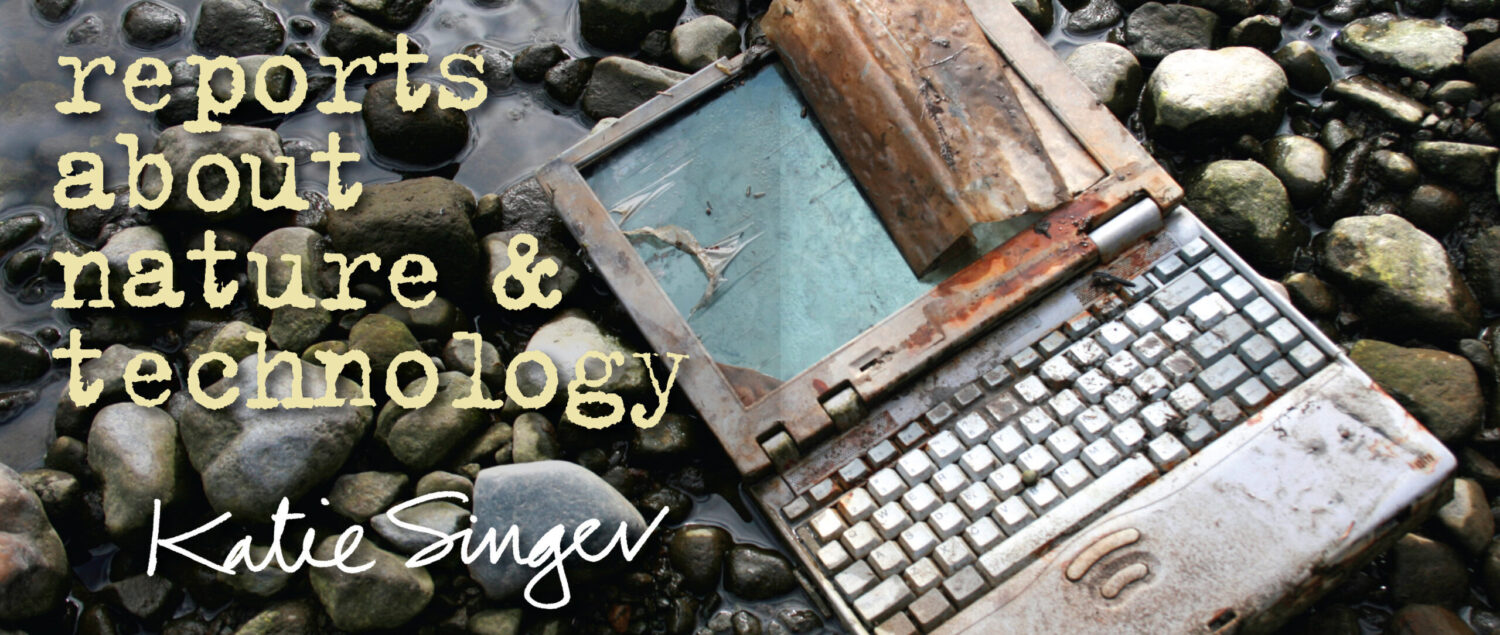An Electronic Silent Spring
October, 2016 Newsletter from Katie Singer
www.electronicsilentspring.com
Love that s l o w speed: 15 Steps Toward Reducing Energy Use and Hacking Risks While Maintaining Emergency Preparedness by Katie Singer
Around North America, telecom corporations are now deploying “small cells”–small cellular antennas–on utility poles. Sometimes called distributed antenna systems (DAS), these antennas provide citywide Wi-Fi, I’ve heard of one proposal to install 700 antennas around one town with one permit. I’ve heard of antennas going up with no permit.
How/does DAS relate to 5G antennas (which will support the Internet of Things, IoT)? Good question. I don’t know.
I do know that despite the IoT’s massive cybersecurity risks and energy use, the FCC does not want to limit it in any way. The FCC considers 5G “a national priority” since it will get consumers to buy lots more new things (that connect to the Internet).
I do know that legislators don’t want their town sued by telecom corporations. Discussing any antennas’ health effects with legislators may therefore prove to be a dead-end. Remember Section 704 of the 1996 Telecom Act, which states that “No state or local government or instrumentality thereof may regulate the placement, construction, or modification of personal wireless service facilities on the basis of the environmental effects of radio frequency emissions.” (Here, “environmental effects” includes health effects.)
Perhaps concerned citizens can clarify that wireless tech:
* is no good during a power outage, since cell phones and voice over Internet protocols (VOIPs) like Skype and Magic Jack require electricity.
* increases cyber hacking risks.
* requires more energy than wired tech.
If you community doesn’t want to wake up to antennas on the public rights-of-way near homes, schools and businesses:
- Get to know your town’s telecom facilities ordinance. Get a lawyer on board with you. Read Blake’s book, Cell Towers: Wireless Convenience? Or Environmental Hazard?
- Aim for an ordinance that gives every resident distance from the view of UGLY antennas. (It is still legal to create an ordinance that considers the LOOK of antennas.)
- Aim for local authority over infrastructure placement. If a cellular antenna gets mounted on a structure that does not hold other wireless gear, that’s a new structure. Usually, a new structure requires neighborhood notification, a public hearing and a vote before a permit is issued.
- Ask about liability re hacking and cell tower fires. City-wide Wi-Fi makes residents and businesses more vulnerable to hacking. (From a nearby sidewalk, a hacker could access a baby monitor or “smart” refrigerator or any other device connected to the Internet.) What protections will municipalities and telecom corporations provide against hacking? In the event that someone is hacked, who’d be liable? Also, who will be liable in the event that cellular antennas on public-rights-of-way catch fire or collapse?
The American Academy of Pediatrics has issued new recommendations about children’s screen time and cell phone radiation exposure. Check out early childhood educator Dr. Roxana Marachi’s response
BioInitiative.org co-editor Cindy Sage, MA advises that “Wireless screen exposure is worse than wired. Skyping Grandma and Grandpa on a wired computer is far less a potential health issue. Wired Skype gives electronic access for communicating, but without the pulsed RF in childrens’ little faces and hands.”
Pediatrician Dr. Toril Jelter observes that “the AAP now offers families a template for creating a media plan they can develop together and print and stick on the fridge. It encourages reducing entertainment screen time from two hours to one hour per day. Make sure you get some unplugged time. Families benefit from having dinner together without electronic interruption. And keep electronics out of the bedrooms.” www.electronicsilentspring.com/calming-behavior
Other headlines:
I’ll be giving a talk about how digital technologies impact climate change for the Friends of Merrymeeting Bay’s Speaker Series at the Unitarian Church in Brunswick, Maine, November 9 at 7pm. I’ve posted many of the papers that provide my resources for this talk.
A shocking new study in the World Wildlife Fund’s Living Planet Report 2016 finds that more than two-thirds of the world’s wildlife could be gone by 2020.
“Now, crib monitors can be turned into internet weapons,” a NY Times story by David E. Sanger and Nicole Perlroth reports that “There are tens of millions more insecure ‘smart’ things that could cause incredible disruptions, if harnessed.”
Dr. Joel Moskowitz, public health researcher at UC/Berkeley, answers the question, “Do iPhones emit more radiation than Samsung Galaxy phones?”
I’ve got a new Intro Packet about Liability.
Lobbyist Kevin Mottus encourages concerned citizens to contact the US House Oversight Committee regarding their questioning of the World Health Organization and the International Association for Research on Cancer (WHO/IARC) on the classification of radiofrequency electromagnetic fields as possibly carcinogenic to humans (Group 2B) and their funding through the National Institute of Health (NIH).
A friend recently illuminated:
* Most people don’t like being told what to do.
* Many people prefer to figure things out for themselves.
* If someone doesn’t hear the dog bark, the barking won’t bother them.
* Most people don’t want to listen. They want to be heard.
If these statements are true, what does anyone on-the-ready to tell other people to quit the Wi-Fi…do???
Want to read An Electronic Silent Spring? If you’d like ten or more copies, I can pass on the discount that my publisher extends to me. This translates to a 30 – 35% discount from the cover price ($18), including shipping. To order, please contact me directly: katie @ katiesinger. com
To keep this newsletter and website going, please contribute!
Thanks to everyone who uses electronics as safely as possible, reduces their energy use and EMR emissions.
To healthier ecosystems and communities,
Katie Singer
www.electronicsilentspring.com
